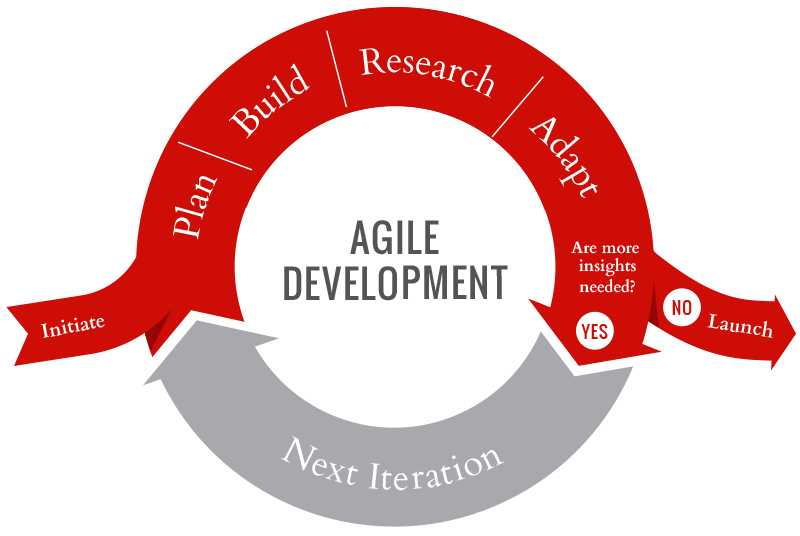George Bernard Shaw may have put it best when he said, “Progress is not possible without change.” Change, along with death and taxes, seems to be the one thing you can’t avoid in today’s evolving world. The extent and pace of change that the 21st century has brought about serves as a constant challenge for marketers today. No longer can we strategize annual marketing plans in September and expect them to remain constant through the following year. Companies are expected to adapt and respond to the changes around them in real time. But how can marketers achieve such agility?
The key lies in the word “agility” or “agile.”
Software companies saw the benefits of agile development as early as 2001. They realized their linear “waterfall” model (where requirements are gathered, software is developed and user feedback is collected) did not allow for the adaptability and responsiveness that was required to keep pace with changing technology. As a result, they developed a system called “agile process management” that incorporated iterative development of pieces of functionality, with constant input along the way. This continuous learning enabled developers to quickly adapt to the constant changes they encountered.
So how does this apply to us as marketers? Many of today’s companies are gaining their market insights with a similarly outdated waterfall method. They develop their guides/surveys, conduct their research, put together their reports and present the findings to management, all over a substantial period of time. It’s often only at the final presentation that it’s discovered that management requirements have changed, additional questions have arisen or outside market forces have affected the current market strategy.
Agile market research upends this traditional linear approach by allowing for insights to be gathered continuously in real time and at an affordable cost. Using online communities, we can now gather insights or expose new concepts/messages to consumers and then present revisions to the same consumers within a few weeks or even days. This iterative approach allows for the ability to make changes on the fly while gaining quality, in-depth feedback that addresses the urgent business issues at hand. The benefits to this approach are numerous:
Reduced risk: Risk is reduced through iterative insights/development.
Demand-driven: Allows for quick response to changes in consumer demand.
Early ROI: Frequent insights ensure that marketers can capitalize on feedback early and often.
Increased competitiveness: Real-time insights can support quick changes to business strategy.
Reduced costs: Continuous insights and lean principles make agile research more efficient.
In today’s economy, the true success of marketing teams will be their ability to harness and adapt to change. You may want to ask yourself … can you afford not to be agile?
A version of this post originally appeared on Fountainhead Strategy.
